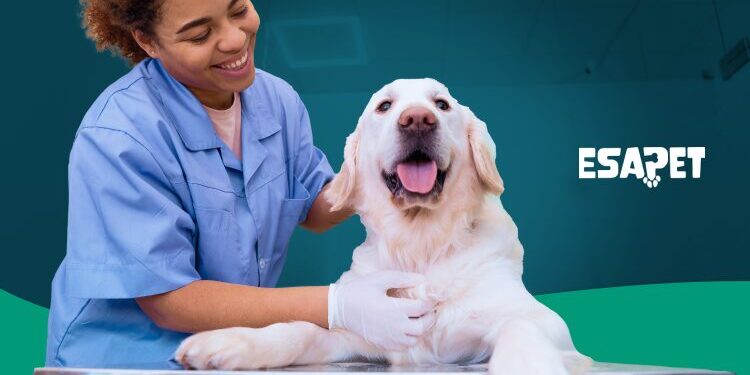Types of Pet Insurance: Which One is the Best for Your Pet? (2026 Guide)

Deciding on the right type of pet insurance can be as crucial as choosing a family doctor. Your beloved pet, much like any family member, deserves the assurance of good health and well-being.
With many options available, understanding the different types of pet insurance is essential. It helps to make a decision that aligns with your pet’s health needs and your financial status.
Each plan offers a unique range of coverage tailored to different situations. In this guide, we will explore what each type of pet insurance covers, helping you choose the best one for your pet.
Types of Pet Insurance Coverage
Exploring the various types of pet insurance is a critical step for pet owners. It ensures their animals receive the best care possible without facing overwhelming costs.
Pet insurance policies vary greatly. Each caters to different aspects of pet care, from emergency responses to routine maintenance. Identifying the right type can ease stress when medical issues arise.
Each pet insurance policy serves distinct purposes. From basic coverage plans to more inclusive policies covering diseases and routine wellness. Understanding these options allows you to make decisions that benefit your pet and you.
Accident and Illness Coverage
Accident and illness coverage is a comprehensive pet insurance option. This type addresses a wide array of medical needs that could arise from sudden incidents or illnesses.
This type of coverage is an essential choice for pet owners. It ensures that they can afford the best care when their pets face health challenges.
What It Covers
- Accidental Injuries: Includes treatments for fractures, lacerations, poisonings, and injuries from incidents.
- Medical Conditions: Provides coverage for health diseases. These diseases can include diabetes, cancer, heart disease, respiratory issues, and other conditions.
- Routine Medical Procedures: Covers necessary surgeries, hospital stays, and diagnostic tests like X-rays. It also covers emergency medical treatments related to accidents or illnesses.
How It Works
Once you’ve paid your deductible, it covers a significant percentage of the vet costs. These costs are particularly for accidents and illnesses. You pay the vet bills upfront, submit a claim, and receive reimbursement based on the terms of your policy.
Who Can Benefit
This plan is ideal for all pet owners, regardless of the pet’s age or breed. It’s particularly useful for those with breeds prone to specific health issues. It also benefits pets that are exposed to environments where injuries could occur.
Advantages of Choosing This Coverage
This coverage offers extensive protection against a range of unexpected health issues. This type gives pet owners peace of mind and financial relief during stressful times. It ensures that you are ready for both minor and major medical issues.
Accident-Only Coverage
Accident-only coverage is a type of pet insurance that focuses on injuries resulting from accidents. This plan is more affordable than comprehensive illness and accident coverage. It excludes illness-related medical treatment.
What It Covers
- Accident-Related Injuries: Specifically covers treatments for injuries. These can be broken bones, torn ligaments, and other emergency care following accidents.
- Emergency Surgery: This covers the costs of surgeries needed due to accidental injuries. It ensures your pet gets the necessary medical attention without the burden of high expenses.
- Diagnostic Tests: Includes coverage for X-rays, MRIs, and other diagnostic tests required.
How It Works
Like broader plans, you pay the veterinary costs upfront and submit a claim for accidents. After meeting your deductible, the pet insurance companies reimburse you according to your coverage limits.
Who Can Benefit
This coverage is best for pets who are less likely to suffer from illnesses but are more prone to accidents. It’s also a good choice for owners looking for a cheap option that covers unforeseen expenses.
Advantages of Choosing This Coverage
Accident-only plans are pocket-friendly. They provide essential coverage for major unforeseen injuries. It helps allow pet owners to manage large, unexpected veterinary costs more easily.
Pet Wellness and Health Maintenance Plans
This plan focuses on maintaining your pet’s health through routine check-ups. These plans are typically offered as add-ons to comprehensive or accident-only insurance plans. However, you can also buy it separately.
What It Includes
- Routine Health Maintenance: Covers regular vet visits, vaccinations, and essential tests.
- Preventive Care: Includes treatments for flea, tick, and heartworm prevention. It also includes dental cleanings and routine health screenings.
- Routine Procedures: It covers neutering or spaying. This can help prevent certain types of cancer and reduce behavior problems.
How It Works
These plans usually operate on a scheduled reimbursement model. In this specific routine, preventive care services are reimbursed up to a set limit.
You pay for the care upfront and are reimbursed according to the covered services and your plan’s limits.
Who Can Benefit
It is ideal for all pet owners who wish to actively manage their pets’ health. It’s particularly beneficial for ensuring that young pets develop into healthy adults. It helps maintain the health of aging pets.
Advantages of Choosing This Coverage
By covering routine and preventive care expenses, wellness plans help pet owners manage the overall cost of pet care. It ensures that pets get the necessary care without the financial strain of out-of-pocket expenses.
Other Pet Coverage Options
In addition to standard accident and illness coverage, there are several other options. These specialized insurance options meet the specific needs of pets and their owners:
Chronic Conditions (Such as Cancer, Diabetes, Hip Dysplasia)
It covers chronic conditions and handles ongoing expenses that arise from long-term illnesses. These plans are important for pets with conditions that need continuous treatment and monitoring.
It helps to manage costs associated with medications, regular check-ups, and specific therapies.
Breeding
Breeding insurance is tailored for pets involved in breeding. It covers health issues related to pregnancies and the birthing process.
This type of coverage is beneficial for breeders. This ensures financial aid in case of complications or health care required for both the mother and the offspring.
Boarding and Kenneling
It covers the costs of boarding and kenneling in situations where pet owners cannot care for their pets. This can be during hospital stays or extended travel.
It provides security, knowing that your pet will have a safe place to stay with potential vet care available.
Pre-existing Conditions
Many insurance plans do not cover pre-existing conditions. However, some special policies might offer limited coverage under certain circumstances. These plans cover ongoing management of known health issues, usually at higher interest rates.
Prescription Food
Coverage for prescription food includes diets specifically prescribed by veterinarians. These help manage or treat health conditions such as kidney disease or obesity.
This type of plan helps offset the high costs of specialized foods that are crucial for your pet’s health.
Dental Care
Dental care coverage goes beyond routine cleanings. It encompasses more significant dental work. This includes extractions, root canals, and treatment for gum disease. This coverage helps maintain your pet’s oral hygiene without large out-of-pocket expenses.
Hereditary/Chronic/Conditional Conditions
It covers diseases that pets inherit from their parents or conditions that develop as they age. It’s especially important for breeds known to have genetic predispositions to specific issues.
Senior Pets
Coverage for senior pets addresses the unique health challenges faced by older animals. This includes chronic conditions, decreased mobility, and other age-related issues. These plans often include end-of-life care. This makes them a compassionate choice for aging pets.
Behavioral Health
Behavioral health coverage supports treatments for behavioral problems. These can include anxiety, aggression, and other behavioral issues. It covers consultations with specialists, medications, and sometimes therapy sessions.
End-of-Life Care
End-of-life care insurance provides support during the final stages of a pet’s life. It covers everything from palliative treatments to euthanasia and cremation services.
This coverage ensures that pet owners can provide compassionate care to ease their pets’ suffering at the end of their lives.
Physical Therapy
This coverage includes treatments like hydrotherapy, massage, and rehabilitative exercises. It’s vital for restoring mobility and enhancing the quality of life for pets with physical ailments.
Each of these coverage options offers specific benefits tailored to the unique needs of different pets. These plans enable owners to customize their pet insurance plans for comprehensive protection.
How Does Pet Insurance Work?
Pet insurance operates similarly to human health insurance. Most legit pet insurance companies offer financial relief for pet-related medical expenses through various plans. When you subscribe to a plan, you can make choices about the deductible, the reimbursement rate, and the coverage limit.
These decisions directly affect your pet insurance premiums. They determine how much you pay monthly and how much coverage your pet receives. The main goal of pet insurance is to help pet owners manage the costs of veterinary care.
Upon incurring veterinary costs, the pet owner pays upfront and then submits a claim to the pet insurance company. Reimbursement follows based on the terms set out in the pet insurance policy with pet insurance companies.
This process allows pet owners to afford both routine and emergency care. It makes pet health insurance an important factor in maintaining a pet’s health without financial strain.
What Does Pet Insurance Cover?
- Medical and Emergency Services: Surgeries, prescription medicines, and hospital stays.
- Diagnostic Tests: Necessary procedures like MRI scans and lab tests to diagnose conditions.
- Extended Care for Chronic Conditions: Some policies include long-term treatments for ongoing issues. These can be kidney disease or arthritis.
- Hereditary and Congenital Issues: Many policies cover diseases specific to certain breeds. These can be heart defects or hip dysplasia.
- Alternative Treatments: Many pet insurance plans include therapies like acupuncture or chiropractic care.
- Behavioral Modification: Includes treatments for behavioral issues. It can be crucial for pets with anxiety or aggression.
- Prescription Diets: Cover the cost of a special diet for disease if a vet prescribes them.
Importantly, most pet insurance plans include wellness coverage as an optional add-on. It helps cover routine procedures like vaccinations and regular health screenings.
What Does Pet Insurance Not Cover?
- Pre-existing Conditions: Issues that exist before the policy begins are excluded from coverage.
- Routine and Preventive Procedures: Care such as vaccinations, flea control, and annual check-ups. Many pet insurance cover spaying and neutering. However, they are not included unless a wellness add-on is purchased.
- Cosmetic Surgeries: Procedures not deemed medically necessary. These can be ear-cropping or declawing.
- Breeding and Pregnancy: Costs associated with breeding, pregnancy, and birth. You need to buy them as an add-on.
- Elective Procedures: Treatments considered non-essential are not covered under standard pet insurance plans.
Who Can Get Pet Insurance?
Pet insurance is accessible to a wide range of pet owners. It includes those with kittens and puppies and those caring for older animals or exotic pets. ESA handlers can also benefit from pet insurance, as it provides financial relief and peace of mind when it comes to managing pet’s and ESA’s health.
Benefits of Pet Insurance
- Financial Protection: Pet insurance shields you from unexpected high veterinary costs. This makes it easier to handle emergencies without a significant financial strain.
- Access to Comprehensive Care: With coverage, owners are likely to seek necessary medical care. It ensures pets receive the best possible treatment.
- Flexible Plans: Insurance plans are customizable. They include options that cover everything from basic to comprehensive wellness care.
- Improved Pet Health and Longevity: Regular veterinary care can lead to better health and a longer life.
- Peace of Mind: Knowing you have a financial safety net for your pet’s medical needs can provide immense emotional relief. It allows you to enjoy your time with your pet without worrying about potential health costs.
Do You Need Pet Insurance?
For many pet owners, the decision to purchase pet insurance offers peace of mind. They know they won’t have to choose between their financial stability and their pet’s health.
Benefits of Having Pet Insurance
- Ease of Managing Veterinary Expenses: Help manage and cut costs associated with vet bills.
- Access to Better Health Care: Pet owners can afford more comprehensive and advanced treatments.
- Preventive Health Care: Some policies offer wellness options that support regular health checks. This helps in catching potential issues early.
- Support for Chronic Conditions: Insurance can reduce the ongoing cost of treatments.
- Less Financial Stress: Pet insurance provides a buffer against the financial stress of unexpected issues. It allows pet owners to focus on their pet’s recovery rather than the cost.
Choosing the Right Coverage for Your Pet
Choosing the appropriate pet insurance plan with a pet insurance company depends on several factors. These factors ensure it matches your expectations and your pet’s specific needs.
- Check Your Pet’s Health: Consider factors like age, breed-specific health risks, and health status. Older pets or those prone to genetic conditions may need more comprehensive coverage.
- Consider Your Financial Flexibility: Understand what you can comfortably afford. This is in terms of monthly premiums and potential deductibles. The balance will impact your readiness to handle unexpected expenses.
- Examine Coverage Details: Review what each policy covers and excludes. Ensure it aligns with your pet’s potential needs. It can be accident coverage, illness treatment, or preventive care.
- Use Reviews and Vet Recommendations: Look at reviews from other pet owners and seek advice from your vet. They can offer practical insights into which plans have provided effective coverage.
- Anticipate Future Needs: Think ahead about your pet’s future health needs. Consider how they might change as your pet ages.
Protect Your Pet from Emergencies
Did you know pet insurance can save you thousands on unexpected vet bills, ensuring your furry friend gets the best care without financial stress?
What Does Pet Insurance Cost?
On average, monthly premiums for cats are about $32, while for dogs, the premiums average around $53. More basic forms of coverage tend to be less expensive, averaging about $10 per month for cats and $17 per month for dogs.
The annual costs range from $383 for cats to $676 for dogs. These figures provide a general idea of what you might expect to pay.
However, the actual cost of pet health insurance can vary based on several factors. It can include your pet’s age, breed, and location, as well as the specific pet health insurance plan you choose.
FAQs About Types of Pet Insurance
What Are the Three Types of Pet Insurance?
The three main types of pet insurance are Accident-Only, Accident and Illness, and Wellness or Preventive Plans.
What Is the Best Level of Pet Insurance?
The best level of pet insurance depends on your needs, risk factors, and financial status. For young, healthy pets, an accident-only plan might suffice. However, for breeds prone to issues, an accident and illness plan is better.
What Insurance Do I Need for My Dog?
The type of insurance you need for your dog depends on several factors. It includes the dog’s age, breed, and financial capacity. For most owners, an accident and illness plan provides balanced coverage. However, if your concern is budget, an accident-only plan may be sufficient.
Does Pet Insurance Cover Monthly Medication?
Yes. Most pet insurance plans that include illness coverage will cover the cost of medications. This can include ongoing medications needed for chronic conditions. However, the specifics can vary by insurer and plan, so it’s important to check the details of your policy.
Does Pet Insurance Cover Any Pets Besides Cats and Dogs?
Yes. Many pet insurance companies offer coverage for other types of pets, such as birds, rabbits, reptiles, and exotic animals. The availability of insurance for non-traditional pets can vary between insurers. You need to research to find a provider that covers your specific type of pet.
Conclusion
Choosing the right pet insurance is important for any pet owner. It helps handle high vet bills, allowing you to focus on your pet’s health. This guide has detailed the various types of pet insurance available, from basic to comprehensive plans.
Understanding these options and matching them with your pet’s needs allows you to make informed decisions. This ensures your pet can receive the best care throughout its life. It can be for an emergency or routine preventive measures.
With the right pet insurance plan, you gain peace of mind and prepare for whatever your pet might need.






